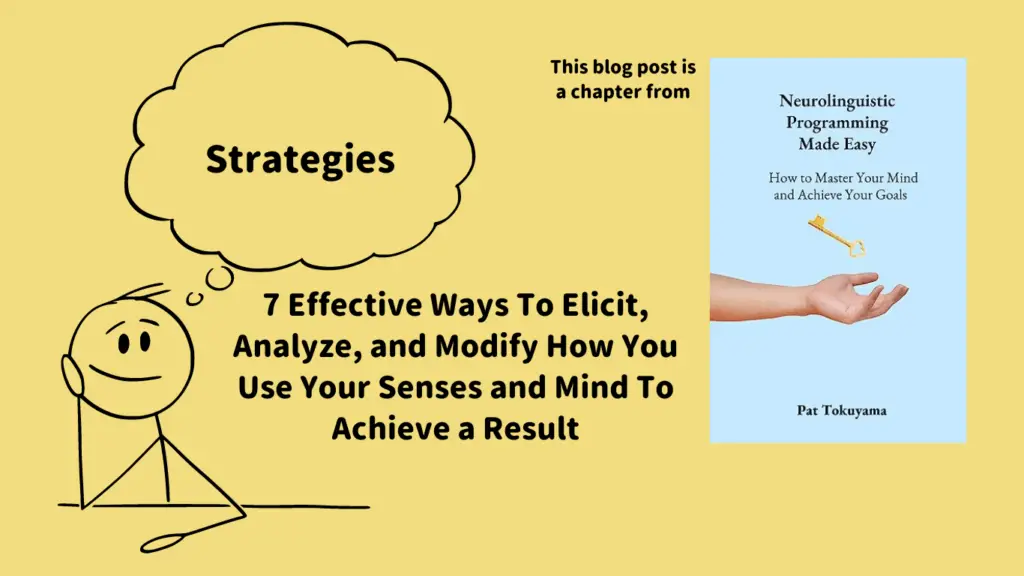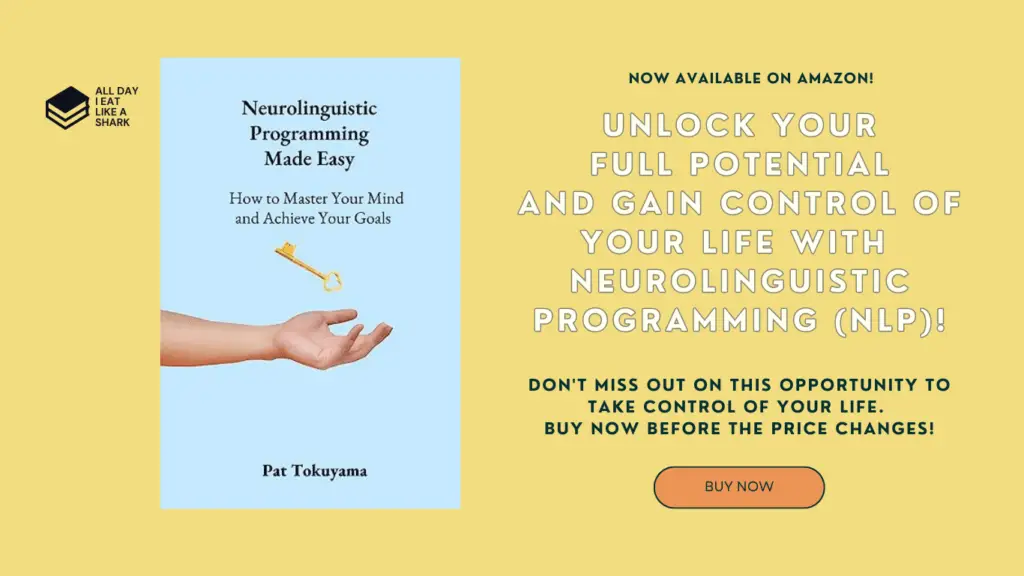
This is the fourth chapter of the Neurolinguistic Programming Made Easy: How to Master Your Mind and Achieve Your Goals by Pat Tokuyama
Guide to the Good Stuff
Have you ever wondered how some people seem to have a natural ability to do something well, such as playing an instrument, solving a problem, or making a decision? Have you ever wished you could learn how they do it yourself?
If so, this chapter is for you.
What are strategies?
Strategies are the sequences of internal and external representations that lead to a specific outcome. Strategies are how you use your senses and mind to achieve a result. Strategies are the key to modeling the excellence of others and replicating their outcomes.
How to elicit strategies
One way to elicit strategies is to ask yourself or someone else questions that reveal the steps and the order of the steps that lead to a specific outcome.
For example, if you want to elicit the strategy for making a decision, you can ask questions like:
- How do you know when you have to make a decision?
- What do you do first when you have to make a decision?
- What do you do next?
- How do you know when you have made a decision?
These questions will help you identify the sensory modalities (visual, auditory, kinesthetic, olfactory, or gustatory) and the submodalities (the details of each modality) involved in each step of the strategy. You can also identify the logical operators (and, or, if-then, etc.) that connect each step of the process.
Another way to elicit strategies is to observe yourself or someone else performing a specific outcome and notice the eye movements and body language that indicate the sensory modalities and submodalities involved in each step of the strategy.
For example, suppose you want to elicit the process for playing an instrument. In that case, you can observe yourself or someone else playing an instrument and notice:
- What do they see before, during, and after playing an instrument?
- What do they hear before, during, and after playing an instrument?
- What do they feel before, during, and after playing an instrument?
Observing these cues lets you infer the sensory modalities and submodalities involved in each strategy step. You can also imagine the logical operators that connect each strategy step.
How to analyze strategies
Once you elicit a strategy, you must analyze it to determine its effectiveness and efficiency. You need to ask yourself or someone else questions like:
- Is this strategy working for me or for them?
- Is this strategy producing the desired outcome?
- Is this strategy optimal or suboptimal?
- Is this strategy simple or complex?
- Is this strategy consistent or inconsistent?
By asking these questions, you can evaluate the strengths and weaknesses of a strategy. You can also compare different strategies for achieving the same outcome and choose the best one.
How to modify strategies
One of the most valuable applications of NLP is modifying strategies. Modifying strategies means changing the steps or the order of the steps that lead to a specific outcome. Modifying strategies can help you improve your performance, learn new skills, and achieve your goals.
To modify strategies, you need to use your imagination and creativity. You need to experiment with adding, deleting, or changing different aspects of your sensory representations and notice how they affect your outcome. You need to use the following techniques:
1. Insertion
A technique that helps you add a new step or representation to your strategy. For example, you can insert a visual image of what you want to remember in your strategy to improve your memory.
2. Deletion
A technique that helps you remove an unnecessary or unhelpful step or representation from your strategy. For example, you can delete negative self-talk from your strategy to reduce your anxiety.
3. Substitution
A technique that helps you replace an existing step or representation with a different one in your strategy. For example, suppose you want to increase your motivation. In that case, you can substitute a dull image with an exciting image in your strategy.
4. Reordering
A technique that helps you change the order of the steps or representations in your strategy. For example, suppose you want to enhance your creativity. In that case, you can reorder the sequence of your sensory inputs in your strategy.
Modifying strategies can change how you do things and improve your results.
Summary
In this chapter, you learned about strategies, the sequences of internal and external representations that lead to a specific outcome. You learned how to elicit strategies by asking questions or observing cues that reveal the steps and the order of the steps that lead to an. You also learned how to analyze strategies by evaluating their effectiveness and efficiency You also learned how to modify strategies by changing the steps or the order of the steps that lead to an outcome.
In the next chapter, you’ll learn about anchoring, the association of an external or internal stimulus with a specific state or response.
